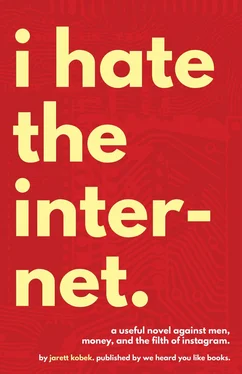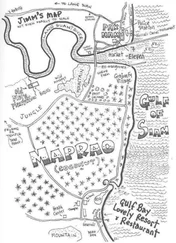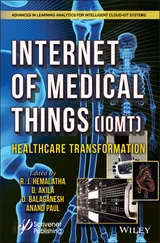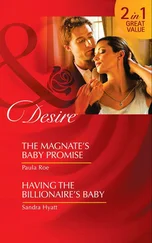Jayson Blair was fired and disappeared in disgrace. Judith Miller got a hefty severance package and continued to work in the news media. Michael Gordon stayed with the New York Times.
So this was the lesson, then, from America’s paper of record: if you’re going to publish intolerable bullshit, don’t make up lies.
Do what a good journalist does.
Go out and push your nose to the grindstone and wear down the soles of your shoes and find someone else’s lies and repeat those.
And don’t be Black. And don’t be a woman.
Anyway, the reporting on Tartine was excellent. The croissants were called “flaky, buttery, crisp, greasy.”
This was true. This was right. The croissants of Tartine were indeed flaky, buttery, crisp and greasy.
So there’s always hope.
Adeline and Erik Willems were sitting in Tartine. They were having brunch. The night before, Adeline had screwed out Erik’s brains.
This proved to be a welcome distraction from the fact that she’d spent several days being excoriated on the Internet, which was a wonderful resource for feigning interest in professional wrestling, hacking corporate websites, and inspiring inchoate longing for the bassist of the Los Angeles band Warpaint.
Adeline was picking at a croissant and drinking coffee. Erik Willems was eating a ridiculous banana creme tart.
Adeline was staring into the blankness of Erik Willems’s eumelaninless face and wondering how it was that he fucked like a beast.
“There used to be a girl who worked here,” said Erik Willems, “Every startup guy in the city was obsessed with her. They were always talking about the Tartine Girl.”
“Did you ever lay eyes upon her, mon frère ? Were you too smitten by her manifold charms?”
“I did,” said Erik. “I didn’t see the appeal. She was cute I guess, but I tend to prefer older women.”
Adeline looked out of the windows at 18th Street, which served as a direct line between Valencia Street and Dolores Park, extending all the way into the Castro. Tartine was between Valencia and the park, which meant that it was on the main corridor of annoyance.
“Wow,” said a guy standing over their table, “You’re, like, totally her, aren’t you?”
“Darling,” said Adeline, “You must have me mistaken.”
“No,” said the guy, “You’re totally like her. You’re that woman from the Internet. Me and my friends have been watching that video, like, all week.”
“You have me sorely mistaken,” said Adeline. “I’m not her.”
“C’mon,” said the guy, “I, like, recognize you.”
“Like, no,” said Adeline. “You know, I’ve totally been getting this for a few days, right? The problem is that there’s a little, like, confusion. You’ve got me mistaken with M. Abrahamovic Petrovitch, but I’m not her. Like, I’m also, like, famous, which is why you recognize me, okay? My name is Marina Abramović. Do you, like, remember when Lady Gaga, like, went to the MoMA and stared into someone’s face? That was totally my face. I’m not M. Abrahamovic Petrovitch. I’m somebody else who’s somebody. I’m Marina Abramović. You know, The Artist is Present? ”
“Oh, whoa,” said the guy. “My mistake. Can we take a selfie?”
Adeline and Erik Willems left Tartine. They walked towards Adeline’s apartment.
“I had no idea you could do other accents,” said Erik.
“Some of us,” said Adeline, “can be both the cupcake and the pastry.”
Erik Willems didn’t say anything. Adeline had long made him regret mentioning the cupcake or the pastry.
The whole time they were in Tartine, Erik Willems had sat clutched with anxiety. He was waiting for Adeline to mention the cupcake and the pastry. Tartine was, after all, a bakery.
“Do you know, I wonder if this is going to keep happening? It happened yesterday.”
“Someone recognized you?”
“For certainement , my dear,” said Adeline. “I was at the corner store. I let them take a picture. After that, I decided I’m simply going to lie to everyone and say that I’m Marina Abramović. They’ve been tormenting me with her name for three years, so why not embrace the pain? Do you think it’s possible that people out there in New York Land might be inquiring with Marina Abramović as to whether or not she’s M. Abrahamovic Petrovitch?”
Just then, a Google bus drove past.
The most visible sign of San Francisco’s gentrification was the appearance of white luxury buses which roamed the streets like vampires in search of a hissing blood feast.
These buses provided transportation to people who lived in the city and worked at tech companies in Silicon Valley.
They were private buses, which meant that they were available only to employees of companies in Silicon Valley.
The name around town for these buses was Google buses , after Google, the company with which they were most associated.
The Google buses worked on the theory that employees of tech companies had different ideas about life than their parents. They didn’t want to be in the suburbs and they didn’t want to own houses in Silicon Valley and they didn’t want to own cars.
So the buses allowed these employees to work for giant corporations while living in the city and experiencing the rich tapestry of the urban environment and its pleasures.
The necessity of being a unique individualwho cared about living in the city while working for a faceless multibillion dollar corporation was one of the legacies of the Bay Area’s intolerable bullshit. This bullshit had been generated during the late 1960s and early 1970s by young people who mistook participatory capitalism for enlightenment.
In Dallas, the guys who worked for Exxon Mobil knew that they were destroying the environment and loved every minute, funneling oil lucre into God and Guns while having a good ol’ hoot and holler and venting their lust into sex-workers with poor literacy skills and breast implants.
On Wall Street, the guys who made capital from capital hung around in three piece suits, screaming in New Jersey accents about fucking people’s mothers in the ass while pouring gold flake champagne on their own genitalia.
In San Francisco, the generation of capital came with an oppressive narrative about both the investors, and the companies they invested in. They were offering services that changed the world and helped individuals achieve their greatest potential.
Twitter could not be described as it was: a mechanism by which teenagers tormented each other into suicide while obsessing about ephemeral celebrities and on which Adeline argued about whether or not she hated the victims of the Triangle Shirtwaist Fire of 1911.
Twitter was described as an outlet for freedom of speech and freedom of expression. Twitter was changing the world.
Twitter was headquartered in the Tenderloin on Market Street. Mayor Ed Lee had some eumelanin in the basale stratum of his epidermis. He had given Twitter a $22,000,000 tax break to move into the Tenderloin.
The Tenderloin was full of homeless people, drug addicts, and sex-workers. Many of these people were in very poor health.
There were people in the Tenderloin who were so poor that they were infected with tuberculosis, a disease which had been eradicated almost everywhere else in America.
A vast majority of the people with very poor health in the Tenderloin had a plethora of eumelanin in the basale strata of their epidermises.
This concentration of eumelanin was unusual. Between 1990 and 2010, the number of Black people in San Francisco had declined by 35.7 %.
Читать дальше












